Exploring the Great Barrier Reef: Ecology and Conservation
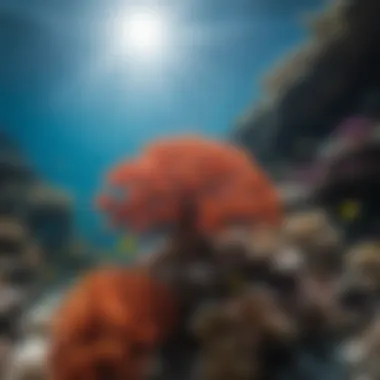
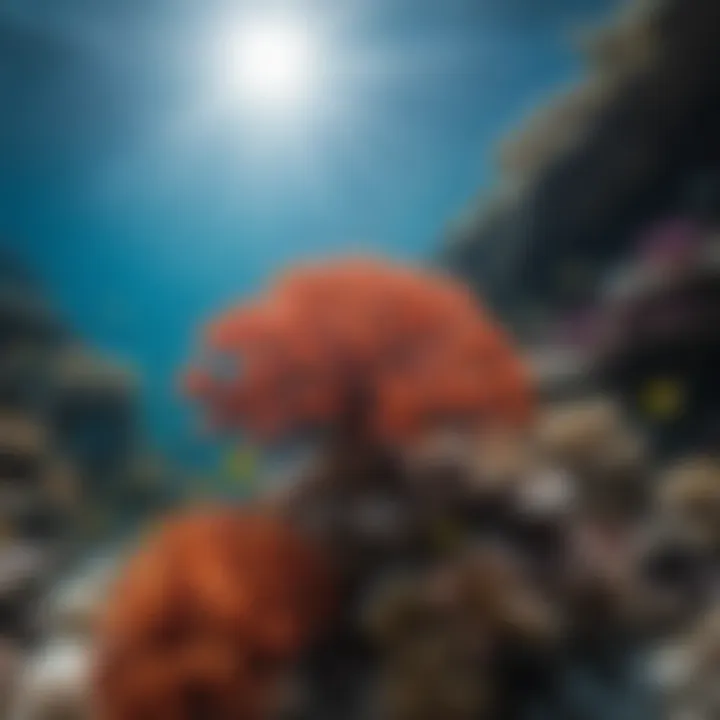
Intro
The Great Barrier Reef is often regarded as one of the world's most magnificent natural wonders. Spanning over 2,300 kilometers along Australia’s northeast coast, it is the largest coral reef system globally, boasting astonishing biodiversity. This majestic underwater paradise is home to thousands of marine species, including colorful fish, sea turtles, and vibrant corals. But as breathtaking as it is, the reef faces serious threats from climate change, pollution, and human impact.
Unraveling the complexities of the Great Barrier Reef is essential for appreciating its ecological importance. For water sports enthusiasts and outdoor adventurers, the reef offers a unique playground for activities like snorkeling, scuba diving, and sailing. However, it’s crucial to engage with the reef sustainably, ensuring that future generations can continue to explore its depths.
In the following sections, we will dive into various aspects of the Great Barrier Reef, including its ecological significance, the diverse marine life flourishing within its waters, the environmental challenges it faces, and the ongoing conservation efforts. We’ll also examine how tourism and research impact this natural wonder, striking a balance between enjoyment and preservation.
By fostering a deeper understanding of the Great Barrier Reef, we can better advocate for its protection and ensure its survival. So, let’s embark on this journey beneath the waves and explore the breathing life of the reef.
Geographical Overview of the Great Barrier Reef
Understanding the geographical nuances of the Great Barrier Reef is crucial to fully appreciate its vastness and ecological importance. This section serves as a vital lens through which we examine how location, size, and geological features interweave to define this remarkable natural wonder. By unpacking these characteristics, we can better appreciate the reef's impact on marine biodiversity and its role within the broader context of environmental health.
Location and Extent
Coordinates and Surroundings
The Great Barrier Reef is often located at coordinates 18° S latitude and 147° E longitude, strewn faithfully along the coast of Queensland, Australia. This positioning is not just a mere fact; it plays a significant part in the region's marine and ecological interactions. Lying between the Coral Sea and the island of New Guinea, the reef finds itself surrounded by various smaller islands and an intricate system of coastal ecosystems. This geographical setup facilitates a rich confluence of marine life, allowing both endemic species and migratory ones to thrive. The warm waters here create a sanctuary, advantageous for those embarking on snorkeling or diving adventures. However, it also places the reef in the line of fire when it comes to human activities, making it a subject of intense environmental discussions.
Total Area Covered
Stretching over an impressive 344,400 square kilometers, the Great Barrier Reef holds the title as the largest coral reef system in the world. The sheer area covered cannot be stressed enough; it creates various microhabitats, fostering a diverse range of marine species. This extensive coverage not only makes it an inviting hot spot for water sports enthusiasts but also emphasizes its vulnerability. With such vast expanses come unique challenges in terms of management and conservation. Each square inch of the reef contributes intricately to the ecosystem, underscoring the need for careful stewardship—there’s always the risk that a careless action could ripple across the ecosystem.
Comparison with Other Reefs
When we talk about the Great Barrier Reef, it’s hard not to compare it with other coral formations like the Belize Barrier Reef or the Red Sea Coral Reef. While each reef has its unique characteristics, the Great Barrier Reef stands out not just due to its size but also its biodiversity. Unlike smaller reefs, which might host fewer species, this Australian marvel plays home to over 1,500 fish species and countless invertebrates. Yet, what makes this reef a fascinating case study is how it encapsulates both beauty and fragility, competing with some reefs for tourist attention yet suffering more intensively from climate-related disruptions. In essence, while it garners interest like no other, it faces challenges that require immediate attention.
Geological Formations
Coral Structures
Related to its fame, the Great Barrier Reef consists of intricate coral structures, fundamental to its identity. Composed mainly of massive coral polyps, these formations provide refuge for countless species and contribute to the overall structural integrity of the reef. The diversity of coral species here is staggering, presenting a variety of colors and shapes that not only catch the eye but also tell a story of resilience and adaptation. However, the differences among coral structures can also lead to competition for space and resources, making life here a tale of harmony and conflict.
Underwater Topography
The underwater topography of the Great Barrier Reef is nothing short of spectacular. With its submerged seamounts, drop-offs, and lagoons, it creates a conducive environment for exploration. Divers often find themselves captivated by the various depths and inlets, revealing secrets unique to each nook and cranny. This topography also significantly impacts ocean currents, which in turn influence temperature and nutrient distribution around the reef—a delicate balance that is essential for maintaining its health. The variation of underwater landscapes offers a richer experience for adventurers, but it also means that ongoing changes in water quality and temperature can dramatically impact the coral system.
Significant Landmarks
Among the many jewels within the Great Barrier Reef, some landmarks shine particularly bright. Sites like the famous Cod Hole, renowned for its giant potato cod that surprisingly approach divers, present not just a delight for the eyes but serve as focal points for both research and tourism. Similarly, the well-known Heart Reef, shaped conspicuously like a heart, illustrates how natural beauty can be a drawcard for those looking to connect deeper with nature. Each landmark not only attracts visitors but signifies areas that require careful conservation to maintain their allure and ecological function. Yet, the beauty often belies the threats looming over these beloved sites, emphasizing the need for better protective measures.
"The Great Barrier Reef is more than just a collection of corals; it's a living organism that reflects the health of our planet. Every corner holds the potential for exploration, discovery, and, sadly, vulnerability."
Ecological Importance of the Reef
The Great Barrier Reef stands as a monumental testament to nature's grandeur, but its ecological significance stretches far beyond its sheer beauty. This marine ecosystem is not only a habitat for a diverse array of species but also plays foundational roles in environmental health, coastal protection, and even human well-being. Understanding its ecological importance is vital for appreciating the interconnectedness of life forms and the effects of environmental changes.
Biodiversity Hotspot
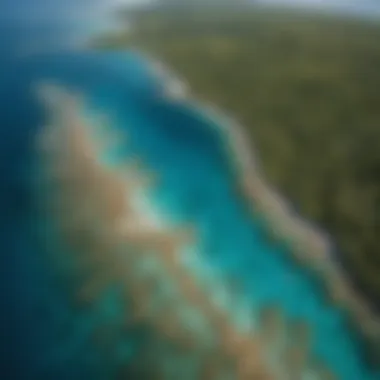

Marine Flora and Fauna
Marine flora and fauna thrive in the reef, contributing greatly to its status as a haven for biodiversity. The reef houses thousands of species, ranging from microscopic algae to gargantuan whales. Major contributors like seagrasses and mangroves play a key role in carbon drawdown, offering numerous ecosystem services. Carpets of vibrant coral house various fish, mollusks, and crustaceans; each playing their part in maintaining ecological equilibrium.
One key characteristic of marine flora is their ability to engage in symbiosis, particularly corals that rely on zooxanthellae for photosynthesis. This unique relationship boosts productivity and forms the foundation of the reef’s complex food web.
Endemic and Migratory Species
Endemic and migratory species not only enrich the biodiversity but also connect ecosystems across vast distances. The Great Barrier Reef is home to unique species like the Clownfish, which has adapted closely to specific anemones. On the other hand, migratory species such as loggerhead turtles and humpback whales use the reef for breeding and feeding, highlighting its critical functions as a refuge.
These species showcase resilience, but they're also indicators of environmental health. Changes in their populations signal shifts in marine ecosystems that might necessitate attention and intervention.
Trophic Interactions
Trophic interactions define the relationships between species at different levels of the food web, underpinning the reef's health and functionality. For example, apex predators like reef sharks maintain the balance of species, aiding the overall stability of ecosystems. Their presence directly affects populations of herbivorous fish, which, in turn, control algae growth on corals.
One significant aspect of trophic interactions is their intricate design—if one piece falters, the entire ecosystem can be thrown out of whack. Understanding these interactions is central to conservation strategies, making trophic studies indispensable.
Habitat Functions
Nursing Grounds
The nursery functions of the reef are paramount, especially for juvenile fish. Shallow, sheltered areas provide protection from predators, allowing young fish to grow and develop before venturing into deeper waters. This feature is significant not only for fish populations but also for maintaining a robust ecosystem.
Many species, including commercially important ones like snapper and grouper, use these nursery grounds, making their health essential for both ecology and fisheries.
Public Health and Cultural Values
The Great Barrier Reef also plays a vital role in public health and cultural values. Many coastal communities depend on its resources for sustenance, tourism, and income. The waters are often a source of food, and local fisheries provide livelihood and cultural identity. Furthermore, indigenous people possess traditional ecological knowledge that enhances their connection to the reef, fostering a sense of stewardship.
This intricate relationship between humans and the reef illustrates the value of conserving it—not merely as a natural wonder but as a source of stability and identity for communities.
Carbon Sequestration
Lastly, the reef’s role in carbon sequestration cannot be underestimated. Coral reefs, together with the surrounding ecosystems, sequester significant amounts of carbon dioxide. This process plays a role in mitigating climate change impacts.
However, with the threats posed by pollution and temperature rise, the reef’s ability to sequester carbon is at risk. Protecting these coastal ecosystems is not just imperative for marine life but also for the broader fight against climate change.
"The Great Barrier Reef is not just a beautiful landscape; it’s a complex, living environment that supports life in extraordinary ways. Its ecological importance extends beyond what meets the eye."
By understanding and appreciating these various dimensions of the Great Barrier Reef’s ecological importance, we can advocate more effectively for its protection and recovery. Engaging with its multifaceted dimensions enriches our connection to nature and informs our approach to sustainability.
Human Impact on the Great Barrier Reef
The Great Barrier Reef, this grand tapestry of marine life and extraordinary biodiversity, finds itself in the crosshairs of human activity. The significance of examining human impact cannot be overstated; it provides a window into the balance we must maintain between enjoying nature and protecting it. This section addresses the multifaceted ways in which humans interact with the reef and the consequences of these relationships, emphasizing the importance of sustainable practices.
Tourism and Recreational Activities
Impact of Reef Tourism
Tourism has become a double-edged sword for the Great Barrier Reef. While it allows visitors to experience unparalleled beauty and contributes significantly to the local economy, the consequences can be dire if not managed properly. Reef tourism increases foot traffic and marine traffic, heightening the risk of physical damage to the delicate coral structures. The sheer popularity of reef diving and snorkeling highlights the allure of the underwater world but also places stress on these environments. In an article focused on the Great Barrier Reef, discussing its relevance is crucial, especially when evaluating how sustainable tourism practices can help mitigate adverse effects.
The key characteristic of this tourism impact is the fragile balance it necessitates. Enjoying these natural wonders should not come at the cost of their destruction. The unique aspect of reef tourism lies in its potential benefits—economic growth, education about marine biodiversity, and support for conservation measures. Yet, if not approached thoughtfully, it can lead to long-lasting scars on the ecosystem.
Regulation and Management
Effective regulation and management are indispensable in safeguarding the Great Barrier Reef. Various policies and frameworks aim to limit damage while promoting visitation. For this article, emphasizing the role of governing bodies and their enforced regulations showcases a beneficial approach to ensuring sustainable practices.
A unique feature of this topic is how management strategies incorporate local knowledge and science to create tailored solutions. For instance, designated mooring sites for boats to minimize anchor damage demonstrates one practical approach to conservation. While regulations can be restrictive for businesses, their long-term benefits to the reef's health far outweigh these short-term inconveniences.
Community Involvement
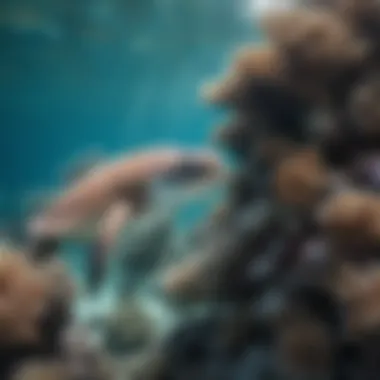
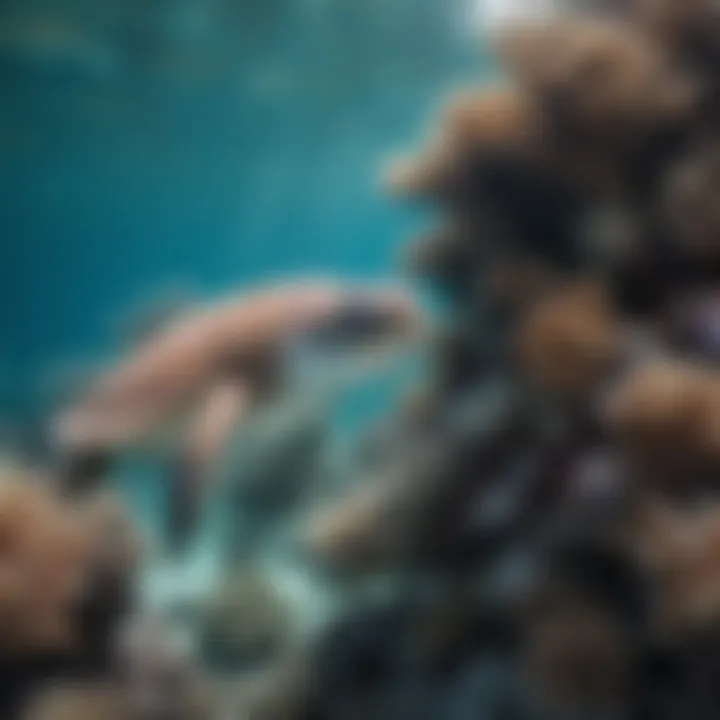
The heartbeat of community involvement plays a pivotal role in protecting the Great Barrier Reef. Local communities are often the best stewards of their environment, resulting in increased efforts to educate others about the importance of conservation. For an audience interested in the interplay between human interaction and the reef, the emphasis on community-led initiatives is vital.
One significant aspect of this involvement is the establishment of local conservation groups that engage volunteers in various preservation efforts. These grassroots movements not only foster a sense of ownership over the reef but also act as a bridge connecting people with science and conservation efforts surrounding the marine ecosystem. The challenge lies in sustaining this involvement over the long haul amid industrial pressures and environmental crises.
Pollution and Environmental Threats
Runoff and Fishing Practices
Runoff and fishing practices represent a major challenge facing the Great Barrier Reef's ecosystem. Agricultural practices surrounding the reef often lead to nutrient and sediment runoff, harming coral health and promoting algae blooms. These blooms can smother coral, disrupting the delicate balance essential for a thriving ecosystem.
Understanding this aspect sheds light on how agricultural activities can inadvertently impact marine life. By highlighting sustainable farming practices, such as buffer zones and responsible fertilizer use, we can bolster efforts to protect the reef. It’s also essential to address how overfishing fosters imbalances in marine populations, further intensifying these environmental threats.
Marine Debris
The threat of marine debris has burgeoned into a critical issue for the Great Barrier Reef. Plastic waste, discarded fishing gear, and other pollutants not only mar the natural beauty of the area but also pose significant risks to wildlife. Exploring marine debris highlights the pressing need for widespread change in our attitudes toward waste management.
One key characteristic of marine debris is its pervasive nature; it affects numerous species, including turtles and seabirds that ingest or become entangled in trash. By examining this aspect in our article, we underline the need for a concerted effort to curb plastic pollution through initiatives like recycling campaigns and clean-up drives around the coastal areas.
Effects of Climate Change
Lastly, the effects of climate change are perhaps one of the most pressing concerns for the future of the Great Barrier Reef. Rising ocean temperatures, increased acidity, and extreme weather events all pose extreme threats to coral health. In this article, discussing climate change is essential to provide context for ongoing threats to the reef’s delicate balance.
One critical feature of this discussion is the potential for coral bleaching, which compromises the very foundation of the reef ecosystem. Highlighting predictive models can help frame the urgency of adaptive responses. Additionally, discussing community and global efforts to combat climate change fosters a deeper understanding of shared responsibility in safeguarding our natural wonders for future generations.
"We do not inherit the Earth from our ancestors, we borrow it from our children."
This quote summarizes the necessity for sustainable practices as we tread lightly upon this delicate ecosystem.
Conservation Efforts and Strategies
Conservation of the Great Barrier Reef isn't just a box to tick; it's an urgent necessity. With delicate ecosystems on the verge of collapse, the importance of conservation efforts comes into sharp focus. These conservation strategies not only protect diverse marine life but also ensure the sustainability of the region for future generations. It's not merely about saving corals but fostering a comprehensive approach that includes legal frameworks, community involvement, and innovative restoration techniques.
Protective Legislation
National Parks and Marine Reserves
National Parks and Marine Reserves are essential underpinnings of conservation efforts for the Great Barrier Reef. These protected areas serve as safe havens for marine life, allowing ecosystems to thrive under less human pressure. One of the key characteristics of these areas is their ability to restrict activities like overfishing and unregulated tourism, which have historically led to environmental degradation.
The Great Barrier Reef Marine Park, for example, has a zoning plan that designates specific areas for protection and recreational activities. This zoning helps to prevent harm to sensitive habitats while still allowing for responsible tourism and research. One unique feature of national parks is their capacity to safeguard habitats that are crucial as breeding and nursing grounds for various species. However, stringent regulations mean that any law change or misuse could prove detrimental.
International Treaties
International treaties play an equally vital role in supporting conservation endeavors. Agreements like the Convention on Biological Diversity and the Ramsar Convention on Wetlands provide essential guidelines and collaborative frameworks that countries can abide by to ensure global standards of conservation.
What makes these treaties particularly beneficial is their ability to foster international cooperation. Countries benefit from sharing research, resources, and strategies to tackle shared challenges like climate change and habitat loss. Still, a common challenge remains: enforcement. The agreements may be in place, but ensuring compliance among member nations can be a complex puzzle.
Advocacy Groups
Advocacy groups prove invaluable in bridging the gap between policy and grassroots action. Organizations like the Australian Marine Conservation Society bring public attention to pressing issues and mobilize community engagement. These groups have a knack for rallying support, facilitating education, and even influencing policy-making through public campaigns and lobbying.
The unique feature of advocacy groups lies in their ability to foster local involvement in conservation. With their community-focused initiatives, they nurture a sense of stewardship among local residents. Yet, they aren't without challenges, such as securing funding and sometimes encountering pushback from industries reliant on reef resources.


Restoration Initiatives
Replanting Coral
Coral replanting is a cornerstone of ongoing restoration initiatives and rewards efforts to rebuild damaged areas. In contrast to letting nature take its course, this proactive approach trialing various coral species for resilience against warming waters and bleaching events has considerable merit.
What sets coral replanting apart is the scientific rigor behind it. Programs often involve intricate nursery setups, where small coral fragments are grown before being transplanted back onto reefs. This not only helps restore coral populations but also provides a lifeline for other marine species dependent on healthy coral ecosystems. However, scalability remains a concern, and high costs can limit the reach of these projects.
Habitat Rehabilitation
Habitat rehabilitation extends beyond just corals; it encompasses the broader spectrum of reef ecosystems. This includes restoring seabeds, seagrass meadows, and mangroves, all of which serve foundational roles in coastal protection.
The key characterization of habitat rehabilitation is its holistic approach. Rather than focusing solely on one element of the ecosystem, it considers interconnections among various habitat types. This comprehensive strategy is not only beneficial but necessary for long-term sustainability. Still, it requires significant coordination among land and water planners, which can be a formidable obstacle.
Research and Innovation
Research and innovation fuel the future of conservation strategies aimed at the Reef. From employing advanced technology in mapping the reef’s condition to exploring genetic techniques to strengthen coral resilience, research is the bedrock of informed strategies.
What’s appealing about this focus is the multidisciplinary approach that brings scientists, policymakers, and local communities together. Innovations can include anything from drone surveillance for monitoring reef health to developing solutions for reducing coastal pollution. The downside? As promising as these innovations may be, funding and long-term commitment for research often falter in the face of immediate economic pressures.
"For the Great Barrier Reef, every small effort counts and adds up. Collective action can lead to significant improvements, even amid overwhelming challenges."
Future of the Great Barrier Reef
Understanding the future of the Great Barrier Reef is crucial. The reef’s health is at the precipice, facing environmental threats such as climate change, pollution, and ocean acidification. Consequently, the direction taken today will dictate its survival tomorrow. By exploring predictive models, adaptation strategies, and community engagement, we can illuminate a path that fosters resilience and ensures the reef continues to thrive for future generations.
Predictive Models and Research
Climate Change Projections
Climate change poses a formidable challenge to the Great Barrier Reef. Rising sea temperatures can cause coral bleaching, a phenomenon where corals expel the symbiotic algae they rely on for nutrients, ultimately leading to coral death. This impact is not just local; it reverberates through marine ecosystems and the communities that depend on them. Projections indicate that if current trends continue, we could see significant bleaching events occurring more frequently. Sounds grim, right? Yet, these models provide a roadmap. They help researchers anticipate changes, allowing for timely interventions.
Adaptation Strategies
The essence of adaptation strategies is clever resilience. It’s like knowing when to hold 'em and when to fold 'em in poker. These strategies include everything from selective breeding of heat-resistant corals to creating marine protected areas that bolster fish populations. A central feature of adaptation is the flexibility it offers to conservation efforts. It also invites local stakeholders into the fold, fostering a sense of ownership. However, while these strategies bring potential benefits, they must be carefully crafted. Rushed decisions may lead to unintended consequences.
Long-term Monitoring Programs
Following a symphony of data allows scientists to conduct long-term monitoring programs which track changes over time. This aspect can’t be overstated; continuous assessment is pivotal in conservation efforts. These programs utilize a range of tools from satellite imagery to diver surveys, providing insights into the reef's ecological health. The beauty of long-term monitoring lies in its predictive power—gathering data over years paints a clearer picture than snapshots alone. However, these programs can be resource-intensive, requiring sustained funding and manpower.
Community Engagement and Education
Local Education Programs
Empowering communities through local education programs is like planting seeds for future stewardship. These initiatives inform locals about the reef’s significance and best practices for its protection. By equipping communities with knowledge, they become active participants in conservation efforts. An interesting feature here is how education can ignite passion; it transforms perceptions and encourages grassroots activism. Yet, effectiveness hinges on proper resources and enthusiastic educators. Without these, the flames of interest may flicker out.
Public Awareness Campaigns
Public awareness campaigns play a pivotal role in shifting societal attitudes toward conservation. By harnessing social media platforms like Facebook and Reddit, these campaigns can stretch across vast audiences. Key features include engaging visuals and compelling narratives that stir emotional connections with the reef. One major advantage is that when the public is informed, it drives demand for sustainable practices. However, misinformation can be a hurdle, demanding vigilance to ensure the message remains clear and impactful.
Role of Technology in Conservation
In today's digital age, the role of technology in conservation is nothing short of revolutionary. Innovations like drones for aerial surveys and autonomous underwater vehicles for deep-sea assessments redefine how we monitor reef health. A unique feature of this tech is its ability to collect data in ways that were unimaginable a decade ago. The advantages are clear—enhanced efficiency and accuracy in data collection bolster conservation strategies. Conversely, heavy reliance on technology can sometimes overshadow local knowledge and traditional practices, which are equally vital in conservation contexts.
"The true measure of a community's commitment to conservation can often be seen in their educational initiatives and how engaged they are in protecting natural wonders like the Great Barrier Reef."
This foresight, combined with community action, paints a landscape of hope. Understanding the complexities of these elements allows us to appreciate the delicate balance needed to safeguard this ecological treasure.















